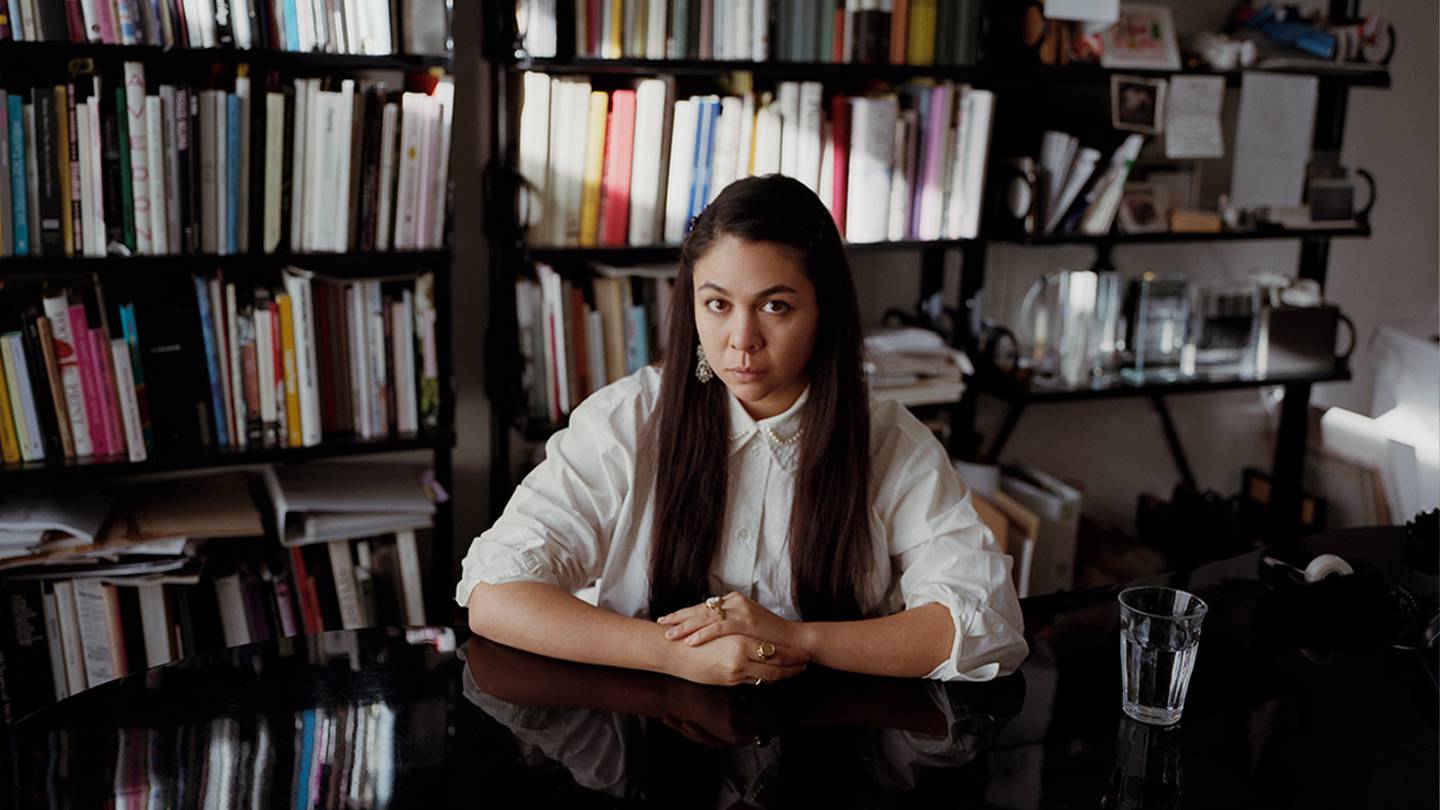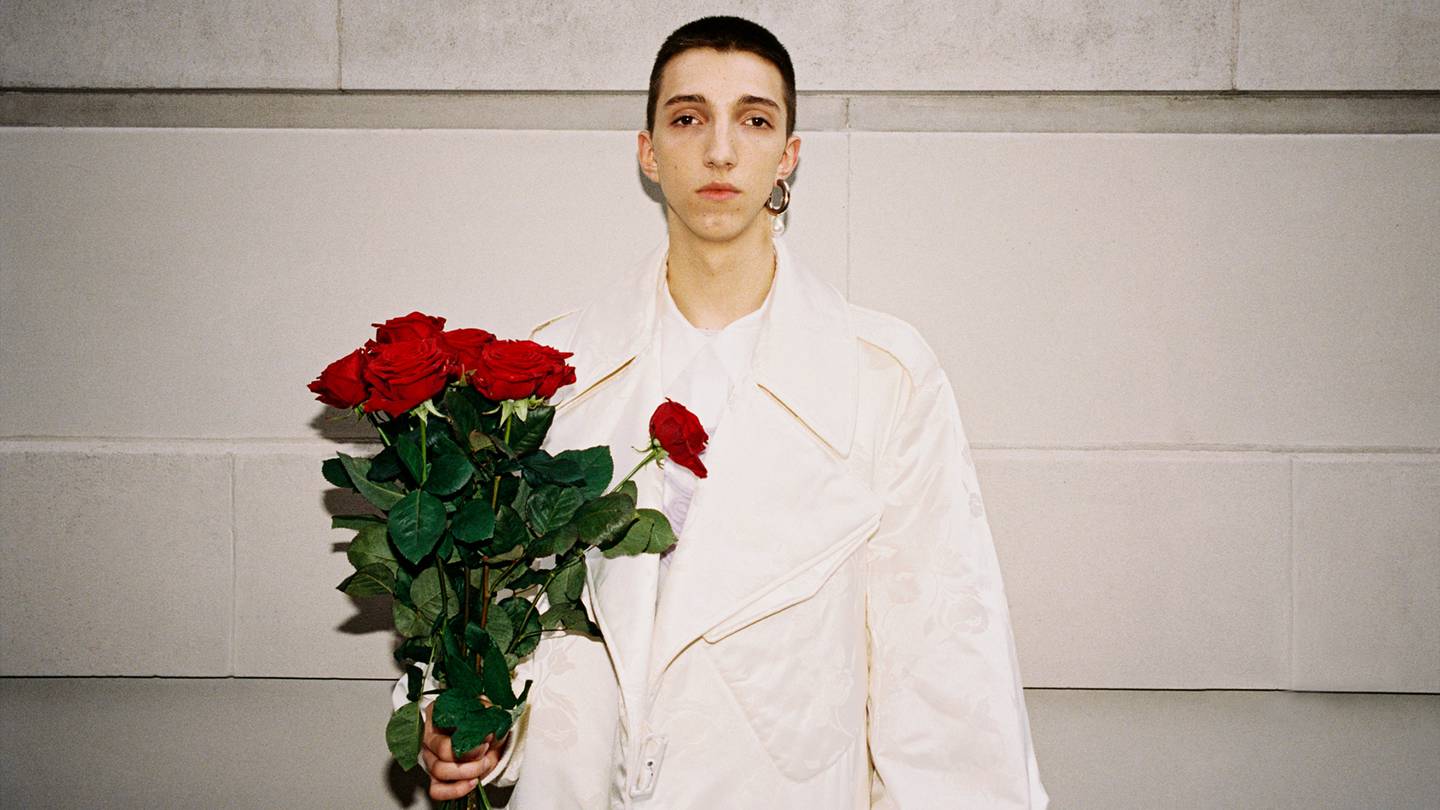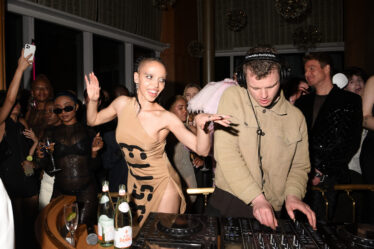
LONDON — Simone Rocha’s first collection for men floats in on a raft of words from her: a reaction to distress, a contrast of fragility and remorse, anger and nature… urgency. It’s the same kind of vocabulary she’s been using since she began showing at London Fashion Week in 2010. The designer has never been afraid of emotional extremes or dark thoughts. In fact, she’s thrived on them, pouring her interior world into a brand that is expected to generate $17 million in 2022, more than 30 percent up on last year.
Acknowledging “a slight morbid feeling” in her latest designs, Rocha says, “I know it happens naturally in the work.” There is something faerie-fey about her designs, an Alice-not-quite-in-Wonderland quality that she herself embodies with her Celtic lilt and her pale skin offset by a long tangle of jetblack hair barely restrained by a ribbon. And now she’s bringing a man into that world.
She would insist he’s always been there. “I do feel that, with all the stories I’ve told over the last decade, there have been men in different guises.” Last season, for instance, was inspired by the “Children of Lir,” an Irish legend in which the sons and daughters of a King are turned into swans by their evil stepmother. Two years ago, it was J.M. Synge’s play “Riders of the Sea” which provided the backstory of a woman in the Aran Islands whose husband and sons drown in an Atlantic storm. “Sometimes, the men are pillars of strength,” Rocha muses. “Sometimes, they’re something to push against.”
One thing they’ve never been, however, is the main attraction. That could change on Sunday, when Rocha, who is pressing ahead with her London Fashion Week show, presents 17 men’s looks alongside her Spring/Summer 2023 women’s collection.
It’s a provoking prospect. Rocha’s shows have always been intense affairs, not just for the way they’ve drawn on the eternal narratives — life, death, love, loss — but for her intimate reflections on her own experiences as a woman. She has threaded menstruation, pregnancy, childbirth, even post-natal depression, through the stories she tells in her presentations, which often loans them a primal power.
They’re so intensely personal that it rather begs the question: what did it take for Rocha to magic herself into a man’s mind for her first men’s collection? “I think that’s what’s really interesting, it becomes more about a role,” she muses. “It’s your own role as a woman with whoever this man is. Or the man’s role in all the women’s stories I’ve told. What is that role? What does that person bring to the table? Is it a supportive role? A negative role? I found that really stimulating to navigate.”

When I ask her whose menswear she herself responds to, the immediate answer is Rei Kawakubo. No surprise there. “And I think Martine Rose is amazing. What Craig Green does is inspiring. It’s very intellectual, but, at the root of it, incredibly emotional. The people I really respect have a strong DNA. Someone like Rick Owens, it’s very different to what we do, but it comes from their guts. They’re the only clothes those people can make. And these are the only clothes I can make.”
In that case, it’s no wonder the menswear Rocha has designed closely parallels her womenswear, in fabrication (taffeta, faille, chiffon), detailing (pearls, pearls, pearls) and construction. Consider, for example, the way that one of the most striking looks harnesses a typical Rocha dress — in tiers of ivory satin — onto the front of a black suit. There are a lot of harnesses in the collection (“harnessing emotion,” Rocha offers by way of an explanation), but she considers this particular look a utilitarian take on one of her signature pieces, probably because it looks like an elaborate apron.
To me, the overlaying of gender looks a little more curious than that. “It’s not a full commitment,” Rocha agrees. “It was really important to me that the men’s and the women’s each had their own identity, but then there was always going to be this inevitable clash between them.”
I can see what she means when she layers a tunic-y chiffon shirtdress delicately embroidered with an echinacea flower (its healing properties one of the reactions to distress that Rocha wrote about in her collection notes) over cotton drill, but most of the time, there’s no clash at all. A black tulle bomber is simply beautiful, whoever is wearing it. “I wanted there to be a real seriousness, simplicity and modernity to the men’s, with really sharp but classic tailoring, but then cross-pollinating it with these other types of things,” Rocha clarifies. “I just feel like it’s nice to be able to give something that breaks down strength with fragility and sensitivity.”
One word she comes back to is “fluidity.” It’s a fashionable enough concept that you might wonder whether Rocha is jumping on a bandwagon here. She’d be mortified by such a notion. For her, it’s simply been a matter of timing. Her non-binary sales assistants have inspired more and more men to wear her womenswear, starting with the knitwear and outerwear, then boldly going into jersey and tulle.
One look in her new collection features a tulle headpiece which harks back to the graduate collection Rocha created for professor Louise Wilson at Central Saint Martin’s. “I was influenced by the Aran Islands in Ireland, where women in mourning used to dye their petticoats red and wear them on their heads. It felt like I had to bring that into this man’s journey. It wasn’t essential, it was just, like, necessary. The right time.”

A huge cloud of tulle enveloping the head and shoulders of a man otherwise unambiguously garbed in sober black tailoring does rather have the effect of blurring — defusing, even — the clearly defined lines of his masculinity. It’s the sort of effect the female designers who do menswear best — I’m looking at you, Miuccia — excel at. Their women are towers of strength, their men are boys.
A cursory glance at the state of the world suggests defusing masculinity — at least in its most toxic form — might be the smallest step towards change for the better. “I felt like I was only going to do this if I could propose an alternative to what is the narrative,” says Rocha, which sounds to me like she agrees. Tulle is a weapon! But wait, she has other arrows in her quiver. Like a Tudor-sleeved, shawl-collared, ribbed-wrist bomber which is quite the most seductive hybrid of salon and street you’ll see in 2023, especially when paired with one of her cotton drill utilikilts (Braveheart with pockets!). Or what about a highwayman’s coat in faille brocade?
Menswear is more rules-based than womenswear. Anyone with a subversive bent should have a lot of fun breaking those rules. But Rocha isn’t so predictable. “I love that it’s strict. I like that there are so many rules, especially with the tailoring. And I’ve actually really enjoyed excavating the collision with my own work — how can it be interpreted without making it silly or frivolous? I still think it should be really beautifully done. Interesting, but not alienating.”
She called on her father, the esteemed designer John Rocha, for backup. “Dad’s been very influential. He used to show men’s in Paris in the early 90s and a lot of the tailoring came from the original blocks from his archives.” I suggest to Simone that it must be eye-opening for John to experience the evolution of menswear, from wool to tulle, so up close and personal. “Sometimes he’s, like, ‘interesting’, ‘very nice.’ But what he’s really honed in on is that it needs to fit beautifully, to feel good, to feel precise. He thought our little daisy embellishment on the suiting was very clever. I was thrilled.”
John’s already told his daughter he wants a suit. The one with the daisy embellishment? “Yeah, he said he can cover it with his hair.” Cue eyeroll.



